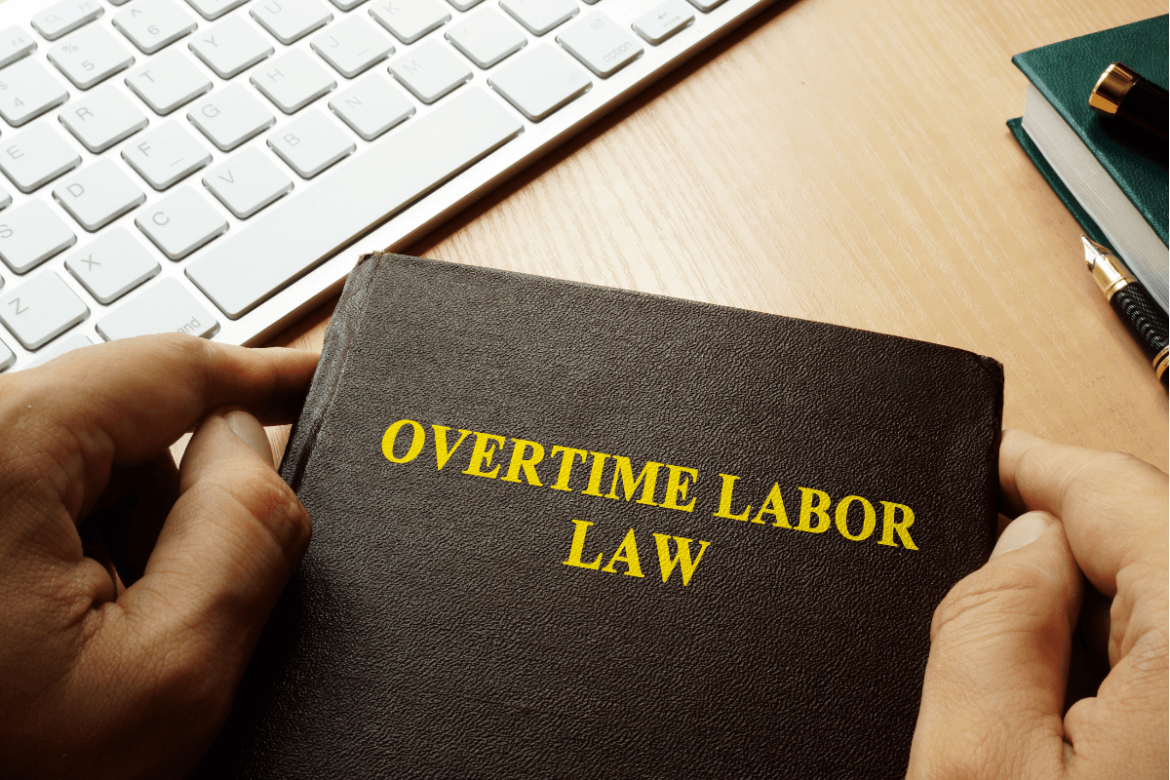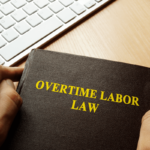It can be difficult to navigate the complexity of employment law, particularly when it comes to comprehending overtime requirements. Understanding the nuances of overtime rules is essential for both employers and employees in New York State to maintain compliance and steer clear of any potential legal issues. An additional element of intricacy is introduced by the unique overtime regulations of New York State, which vary from federal norms in certain ways.
In New York, most workers who put in more hours than the typical 40-hour workweek are entitled to overtime pay, which is calculated at a rate of 1.5 times their usual wage. Eligibility is determined by several exclusions and special requirements, though. These regulations are intended to safeguard employees’ rights, guaranteeing just remuneration for overtime, and providing employers with precise instructions on how to follow
Gaining an understanding of New York’s overtime regulations necessitates investigating some topics, such as which workers are eligible for overtime, how overtime compensation is determined, and the exclusions that relate to certain professions and industries. A thorough understanding of these rules is crucial, regardless of whether you’re an employer trying to stay in compliance or an employee looking to know your rights. The main points of New York State overtime regulations will be covered in detail in this essay, giving you all the knowledge you need to successfully negotiate this complex legal environment.
Overview of New York Through Time
Employers are required to abide by the New York Minimum Wage Order in addition to the Fair Labor Standards Act (FLSA) under New York Labor Law. According to the New York Overtime Law, employers are required to pay 1.5 times the standard rate for any hours worked beyond 40 in a workweek; residential employees are entitled to overtime for any hours beyond 44. When calculating overtime for employees whose pay rates differ, the average rate must be applied.
New York may still demand overtime compensation even though some jobs are exempt from the FLSA’s overtime regulations. Employers who want to control overtime expenses well could think about enhancing scheduling and cutting back on unneeded overtime by utilizing staff scheduler software.
Overtime Pay Calculation for Employees in New York
Basic Overtime Rule
Employees covered under New York state or federal overtime requirements are entitled to 1.5 times their regular rate of pay for all hours worked over 40 in a workweek.
Example Calculation
Regular Rate Hours:
- 40 hours at $10 per hour
- Calculation: 40 hours * $10/hour = $400
Overtime Rate:
- Regular hourly rate: $10
- Overtime premium: 1.5 times the regular rate
- Calculation: $10/hour + (1.5 * $10/hour) = $15/hour
Overtime Hours:
- 10 hours at $15 per hour
- Calculation: 10 hours * $15/hour = $150
Total Pay:
- Regular pay: $400
- Overtime pay: $150
- Total: $400 + $150 = $550
Regular Rate of Pay
The regular rate of pay is the employee’s normal hourly wage. If an employee’s rate of pay varies, the average rate should be used.
Exclusions from Regular Rate of Pay
Certain payments are not included in the calculation of the regular rate of pay:
- Reimbursement for expenses incurred on behalf of the employer
- Premium payments for overtime work
- True premiums for work on Saturdays, Sundays, and holidays
- Discretionary bonuses
- Gifts and payments that are in the nature of gifts on special occasions
- Payments for occasional periods when no work is performed (e.g., vacation, holidays, illness)
By adhering to these guidelines, employers can ensure they correctly calculate the overtime pay owed to employees, complying with New York state and federal requirements.
New York Overtime Requirements: Covered and Exempt Employees
Definition of Employee
In New York, overtime coverage applies to all individuals who meet the definition of an “employee,” defined as any individual employed or permitted to work by an employer in any occupation.
Exemptions from Overtime Requirements
Neither the Fair Labor Standards Act (FLSA) nor New York State overtime requirements apply to the following categories of workers:
- Executive Employees
- Administrative Employees
- Professional Employees
- Outside Salespeople
- Individuals Working for a Federal, State, or Municipal Government (with specific exceptions noted below)
- Farm Laborers
- Certain Volunteers, Interns, and Apprentices
- Taxicab Drivers
- Members of Religious Orders
- Certain Individuals Working for Religious or Charitable Institutions
- Camp Counselors
- Individuals Working for a Fraternity, Sorority, Student or Faculty Association
- Part-time Babysitters
Special Considerations for Government Employees
While overtime requirements generally do not apply to individuals working for federal, state, or municipal governments, there are exceptions. The law does cover employees working for:
- Charter Schools
- Private Schools
- Not-for-Profit Corporations
- Non-Teachers Working for School Districts
Discretionary Overtime for Exempt Employees
Employers have the discretion to pay overtime to exempt employees. This discretion does not apply to:
- Elective Officers
- Officers otherwise excluded by law
- Any or all public employees under the jurisdiction of General Municipal Law 90
By understanding these exemptions and specific provisions, employers can ensure compliance with New York’s overtime laws while recognizing the distinctions in employee classifications.
Rules for Salaried Employees
While executive, administrative, and professional personnel are exempt from overtime regulations, paid staff members may still be eligible for extra compensation for hours over forty. Only the overtime pay rate is impacted by the amount of hours worked by the employee during their regular workweek.
Example: A worker may be employed for a $405 weekly compensation to perform a 45-hour workweek (referred to as “straight time”). The usual rate in this case is $9.00 per hour, which is calculated by dividing the $405 straight-time income by 45 hours. The worker should receive $13.50 for five hours per week at the overtime rate of $13.50 per hour ($9.00 straight-time hourly rate plus $4.50 additional hourly pay).
New York Salary Thresholds for EAP Employees
| Region | Effective Date | Standard Salary Level | Annual Salary Level |
|---|---|---|---|
| New York City, Nassau, Suffolk, and Westchester Counties | January 1, 2024 | $1,200.00 per week | $62,400 per year |
| January 1, 2025 | $1,237.50 per week | $64,350 per year | |
| January 1, 2026 | $1,275.00 per week | $66,300 per year | |
| Rest of New York State | January 1, 2024 | $1,124.20 per week | $58,458.40 per year |
| January 1, 2025 | $1,161.65 per week | $60,405.80 per year | |
| January 1, 2026 | $1,199.10 per week | $62,353.20 per year |
Executive Exemption Criteria
| Requirement | Description |
|---|---|
| Salary Level Test | The salary must meet the specified threshold based on the region and effective date. |
| Primary Duty | The primary responsibility involves managing a business/company or a recognized department. |
| Directing Work | Regularly directs the work of at least two or more full-time employees. |
| Hiring/Firing Authority | Possesses the authority to hire and/or fire employees, or their input carries substantial weight. |
To qualify as an Executive Exempt Employee under New York Overtime Law, an individual must satisfy the Salary Level Test and the following criteria:
- Primary Duty: Managing a business/company or a recognized department/subdivision.
- Directing Work: Regularly overseeing the work of two or more full-time employees.
- Hiring/Firing Authority: Holds significant influence or decision-making power regarding employment matters.
Employees meeting these standards are exempt from FLSA minimum wage and overtime regulations.
Administrative Exemption Criteria
To qualify for an administrative exemption, an employee must meet the following criteria in addition to passing the Salary Level Test:
- Primary Duty: Engaged in office or non-manual work directly related to management or general business operations, either for the employer or the employer’s customers.
- Exercise of Discretion: Primary duty includes exercising discretion and independent judgment concerning significant matters.
If an employee fulfils these two requirements along with the Salary Level Test, they are classified as an Administrative Exempt Employee and are exempt from FLSA minimum wage and overtime regulations.
Professional Exemption Criteria
To qualify for a professional exemption, an employee must meet the following criteria alongside passing the Salary Level Test:
- Advanced Knowledge: Engaged in work requiring advanced knowledge, predominantly intellectual, involving consistent discretion and judgment.
- This advanced knowledge must be in a field of science or learning, typically acquired through prolonged specialized intellectual instruction (e.g., college), or
- Engaged in work requiring invention, imagination, originality, or talent in a recognized field of artistic or creative endeavour (e.g., musicians, composers, engineers).
If an employee meets one of these two requirements along with the Salary Level Test, they are considered a Professional Exempt Employee and are not subject to FLSA minimum wage and overtime regulations.







